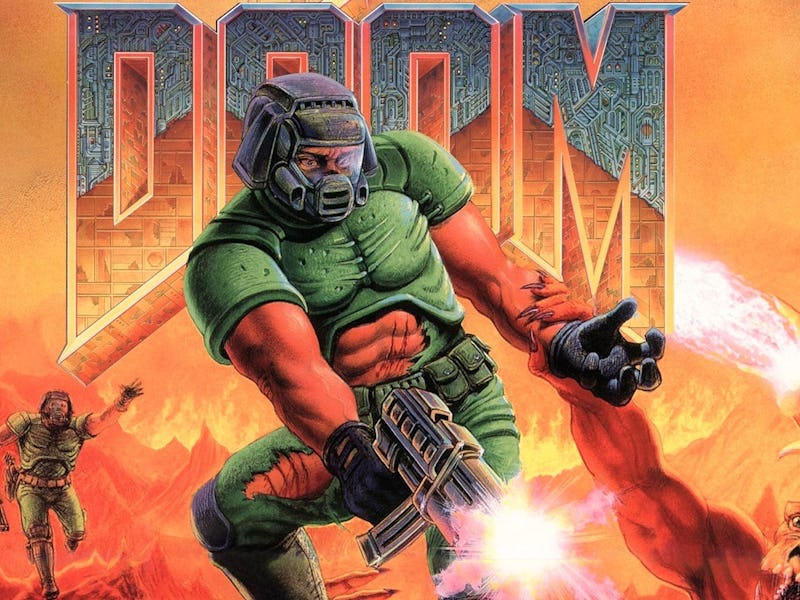
Doom felt like a sin. It felt mature in the same pubescent way that uncensored rap and late-night Cinemax feels mature. The intended audience wasn’t adult, but the content was. Kind of. Almost.
In retrospect, the game is almost cute. But it didn’t feel cute at the time — and that’s the measure of the thing.
Last week, Doom was announced as part of the inaugural class of the Video Game Hall of Fame. Standing proudly next to its classmates, Doom might look like a punk, like a cheap mash-up of Aliens and a Judas Priest album cover. The game was an outlier precisely because, unlike Pac-Man and Pong, it wasn’t important for technical reasons. It was important because it brought a new mentality to gaming.
It was the only game out of the initial, honored bunch in which players could blast a demon in the face with a shotgun.
Developed by iD Software and released in 1993, Doom was a violent, pixel-y, thoroughly nihilistic affair defined by an uber-simple story: A Marine in a Mars station accidentally opens a portal to hell and has to shoot his way through nine circles. It was dumb, but kind of brilliant and massively influential.
For 1993, Doom was gory. Realistic? No. But it was absurdly gruesome, with every shotgun blast and chainsaw rev rendered through subwoofers. More than even Mortal Kombat, Doom can claim to have jumpstarted a very long, very strange national conversation about violence in video games. The Columbine high school shooters were - among a crowd of millions - known Doom players. This fact would be recycled again and again over the years until it almost meant something.
Technically, Doom was something just short of an achievement. Taking cues from Hollywood horror cinematography, iD Software pushed their boundaries to the limit and implemented dynamic lighting within their environments, a rarity in most video games at the time. Hallways and corners flickered with broken lights, giving you only a glimpse of the beast who inhabited it. In total darkness, you could only hear the growl of a horned beast.
What resulted was a successful tonal change, a mood whiplash designed to remind players of the game’s point: survive. In the opening level, a hardcore, adrenaline-pumping track underscores ever steps. Danger wasn’t even imminent, but this didn’t feel like laser tag, it felt like fucking war.
By the second level, the music slowed and sounded more sinister. Lights flickered and the bellows of demons became more terrifying.
Doom also singlehandedly created the modern modding community. Although legally muddy, gamers with the technical know-how cut their teeth programming by altering Doom into whatever form they wanted. From Ghostbusters to a dual-wielding tribute to Tomb Raider, thousands of mods were floated on the internet as the game became something closer to a platform. Doom fostered a creative, passionate community that still thrives today. When you see YouTube videos of an evil Thomas the Tank Engine wrecking Skyrim, you have Doom to thank.
In 2005, Universal Pictures released Doom, a movie adaptation that harshly failed despite its powerhouse cast of Dwayne Johnson, Karl Urban, and future Oscar-nominated actress Rosamund Pike.
As different as it is from Tetris and Super Mario Bros., Doom deserves a spot in the Video Game Hall of Fame. It was just one game, but it ignited a fire among gamers, birthing the “hardcore” gamer demographic. It created a massive, creative community. And it single-handedly popularized a game genre that has proven to be far more lucrative than almost any other form of pop culture.
Doom was a guilty pleasure, sure, but the guilt faded and the pleasure didn’t. That’s the one good thing about going up against demons: You don’t have to feel bad for blowing their damn heads off.